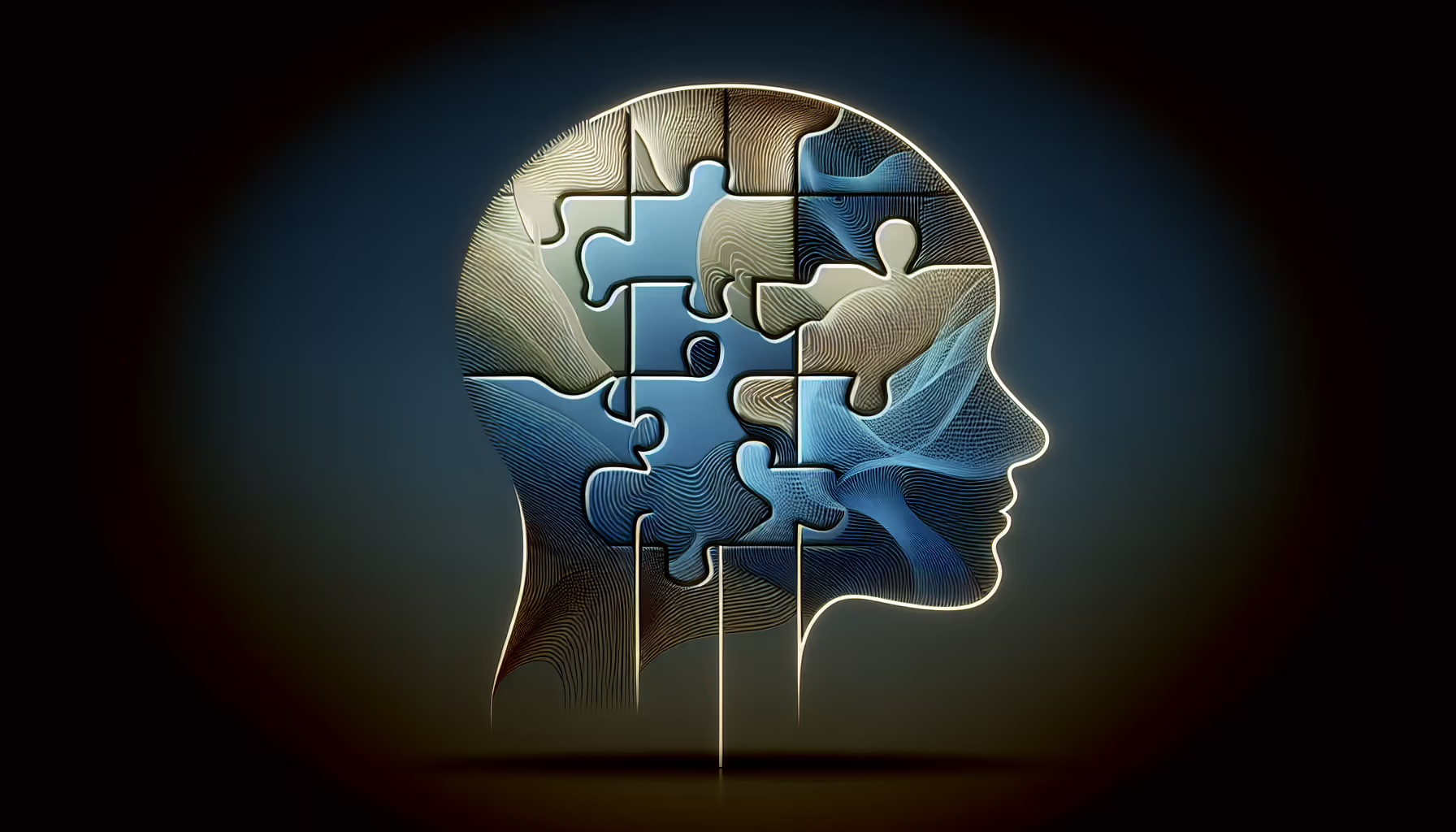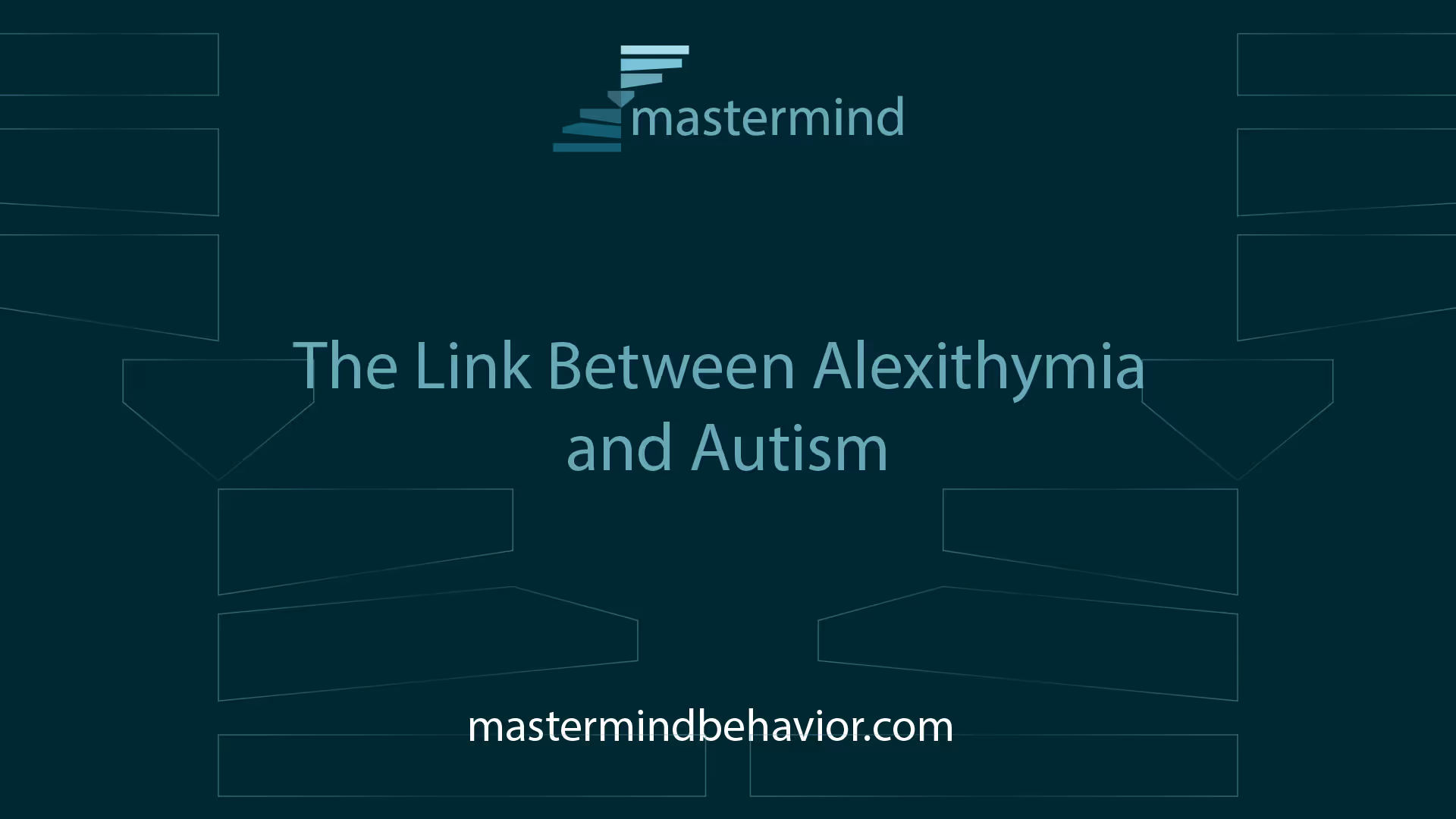The Link Between Alexithymia and Autism

Understanding Alexithymia and Autism
In the sphere of mental health, it's crucial to explore and understand the complex relationships between various conditions. One such intersection lies between alexithymia and autism, a topic that has been gaining scientific attention.
Overview of Alexithymia
Alexithymia is considered a "sub-clinical phenomenon," not a personality disorder per se, but a personality trait with a dimensional nature. It is characterized by an impairment in the awareness of emotions, attributable to a deficit in processing affective information. This condition is illustrated by a person's inability to identify, understand or articulate their own feelings, often perceived as emotional numbness.
The prevalence of alexithymia varies, with rates ranging from 7% to 13% in community samples. However, it's estimated to be several times higher in clinical samples, providing significant implications for mental health practice. For a more comprehensive understanding of this condition, visit our page on alexithymia definition.

Relationship Between Alexithymia and Autism
There's a substantial overlap between alexithymia and Autism Spectrum Disorder (ASD) in emotional, social, and cognitive realms, resulting in varying degrees of convergent consequences on individual and social behavior [1].
In fact, it's estimated that at least 50% of individuals with autism are alexithymic, indicating a strong association between the two conditions. Alexithymic individuals tend to use more avoidant and maladaptive emotion regulation strategies, which are also common in psychopathologies like depression and anxiety. This shared trait provides a deeper insight into the emotional challenges faced by individuals with autism.
Understanding the relationship between alexithymia and autism is crucial for creating effective treatment strategies, such as therapy for alexithymia, and for providing proper support to individuals with autism. Continued research in this area can help shed light on the complexities of these conditions and provide more targeted interventions for those affected.
The Impact of Alexithymia in Autism
The relationship between alexithymia and autism is an important facet to understand when discussing the emotional and social challenges autistic individuals may face. This section aims to highlight the prevalence of alexithymia in the autistic community and its effects on social-communication.
Prevalence of Alexithymia in Autistic Individuals
Numerous studies have noted a significantly higher prevalence of alexithymia among individuals with autism compared to the general population. According to NCBI, prevalence rates of alexithymia in the autism population range between 65 and 85%. A study published in NCBI reported that 47.3% of autistic females and 21.0% of autistic males meet the cut-off for clinically relevant alexithymia. Another research pointed out a significantly increased risk of alexithymia in autistic participants, stating that 49.93% of the ASD group compared to 4.89% in the neurotypical group exhibit the condition.
Effects of Alexithymia on Social-Communication
Alexithymia, which is defined in our alexithymia definition article as a condition characterized by difficulty in identifying and describing one's emotions, can significantly impact social-communication abilities in individuals with autism. Difficulties in describing feelings, a hallmark symptom of alexithymia, are particularly associated with current self-reported social-communication difficulties and predict later social-communication challenges [4].
On the other hand, difficulties in identifying feelings, another common symptom of alexithymia, are particularly associated with current anxiety symptom severity and predicted later anxiety [4]. This underlines the important role emotions play in social communication and the potential complications that can arise when an individual struggles to understand or express their emotions, a common situation in alexithymia.
Understanding the prevalence and impact of alexithymia in autistic individuals is a crucial step towards developing effective therapies for alexithymia and improving the quality of life for those on the autism spectrum.
Symptoms of Alexithymia in Autism
Identifying symptoms of alexithymia in individuals with autism is essential for understanding and addressing their unique emotional needs. The two primary symptoms are difficulty describing feelings and difficulty identifying feelings.
Difficulty Describing Feelings
One notable symptom of alexithymia in autistic individuals is a pronounced difficulty in describing feelings. This challenge is closely tied to social-communication difficulties, both as a current issue and as a predictor of future difficulties.
For those with alexithymia, expressing emotions can be akin to trying to describe a color they've never seen. Feelings, which are intrinsically abstract and complex, may be particularly challenging for those on the autism spectrum to articulate. This difficulty can cause communication issues, impacting social relationships and contributing to feelings of emotional numbness.
Difficulty Identifying Feelings
In addition to difficulties describing emotions, those with alexithymia may also struggle to identify their feelings. According to research, this difficulty significantly mediates the relationship between autistic traits and emotion regulation difficulties [5].
Poor interoception awareness, which is the ability to perceive internal body signals, is linked to alexithymia. Many autistic individuals experience poor interoception awareness, leading to difficulties in perceiving internal signals such as emotions.
This lack of emotional awareness can result in a disconnect between the individual's emotional state and their understanding of it. They might feel discomfort or agitation without being able to identify these feelings as sadness, anger, or anxiety.
These symptoms of alexithymia, when present in individuals with autism, demand a nuanced approach to therapy and emotional education. It's important to remember that alexithymia is not a personality disorder but a personality trait, and it's characterized by an impairment in the awareness of emotions due to a deficit in processing affective information [1].
Understanding these symptoms can help guide effective intervention strategies and therapies. For more information about the symptoms of alexithymia and potential treatment approaches, check out our articles on symptoms of alexithymia and therapy for alexithymia.
Challenges Faced by Autistic Individuals
Autistic individuals often face unique challenges, especially when alexithymia, an emotional condition characterized by difficulties in identifying and describing feelings, is also present. In fact, the prevalence of alexithymia among those with autism is significantly higher than in the neurotypical group, with rates reaching up to 49.93% compared to 4.89% respectively [3]. This combination can lead to a myriad of difficulties, particularly in terms of emotional regulation and mental health.
Emotional Regulation Difficulties
Emotional regulation, or the ability to manage and respond to an emotional experience, can be particularly challenging for autistic individuals with alexithymia. A key symptom of alexithymia is the difficulty in describing feelings, which has been directly linked to social-communication difficulties both in the present and as a predictor of future challenges.
This struggle to express emotions can lead to feelings of frustration and misunderstanding, both for the individual with autism and those around them. It may also contribute to behaviors often associated with autism, such as repetitive behaviors and resistance to change. Addressing these emotional regulation difficulties often forms a crucial part of therapy for alexithymia.
Impact on Mental Health
In addition to the social-communication challenges, alexithymia can have a significant impact on the mental health of autistic individuals. Difficulty in identifying feelings, another key symptom of alexithymia, has been closely associated with anxiety symptom severity.
This anxiety can manifest in various ways, from generalized anxiety disorder to more specific phobias. The inability to accurately identify and articulate these feelings can make it harder for these individuals to seek and receive the appropriate help, contributing to a cycle of increasing anxiety and stress. It's crucial to be aware of this profound impact alexithymia can have on the mental health of autistic individuals, and to ensure appropriate support and interventions are in place.
Understanding the interplay between alexithymia and autism is crucial for providing the right support and improving the quality of life for autistic individuals. By acknowledging and addressing these challenges, we can help them navigate their emotional landscape and improve their social-communication skills. For a detailed look at alexithymia and its implications, check out our article on alexithymia definition.
Diagnosis and Assessment
When it comes to diagnosing and assessing alexithymia in individuals with autism, there are a few key tools and considerations.
Toronto Alexithymia Scale (TAS)
The Toronto Alexithymia Scale (TAS) is commonly used to assess alexithymia in autistic individuals. Autistic people typically score significantly higher on all measures compared to neurotypical individuals, indicating a higher prevalence of alexithymia in the ASD group. The TAS-20 and TAS-26, different versions of the TAS, are used to reliably identify alexithymia in the ASD population.
Autistic individuals often score higher on the Difficulty Describing Feelings (DDF) and Difficulty Identifying Feelings (DIF) subscales of the TAS, suggesting that they may struggle with recognizing, identifying, and describing emotions. These difficulties are not only characteristic of alexithymia but are also common in individuals with ASD [3]. For more information on the symptoms of alexithymia, visit our article on symptoms of alexithymia.
Differentiating Alexithymia and Autism
Although alexithymia and autism often occur together, it's crucial to differentiate between the two when diagnosing and assessing an individual. Alexithymia is characterized by difficulties in identifying, describing, and communicating feelings, whereas autism is a neurodevelopmental disorder marked by challenges with social interaction and communication.
While the prevalence of alexithymia is higher in individuals with autism, not all autistic individuals experience alexithymia. Similarly, not all individuals with alexithymia are autistic. Therefore, a thorough assessment that takes into account the individual's unique symptoms and challenges is critical.
Understanding whether an individual is dealing with alexithymia, autism, or both can help guide treatment approaches and strategies. For example, interventions for managing alexithymia might focus on improving emotional awareness and expression, whereas autism therapies might target social and communication skills. Learn more about treatment options in our article on therapy for alexithymia.
In conclusion, diagnosing and assessing alexithymia in individuals with autism requires a comprehensive understanding of both conditions and a careful evaluation of the individual's emotional and social experiences and challenges. This critical step can pave the way for effective intervention and support.
Treatment Approaches
Managing alexithymia and autism requires a unique set of intervention strategies. These interventions focus on both addressing the emotional processing challenges associated with alexithymia and enhancing the emotional awareness and regulation skills of individuals. In this section, we will discuss the different treatment approaches for managing alexithymia and autism.
Interventions for Managing Alexithymia
Dialectical Behavior Therapy (DBT) has been shown to be effective in treating clinical populations with reduced emotion awareness and emotional dysregulation, conditions commonly associated with alexithymia [2]. DBT combines standard cognitive-behavioral techniques for emotion regulation with concepts of mindful awareness, distress tolerance, and acceptance.
The therapy focuses on teaching individuals skills to manage their emotions, reduce self-destructive behaviors, and improve relationships. It's worth noting that therapy can often be a long-term process, requiring patience and dedication from both the individual and their support network. For more information on therapy options, visit our article on therapy for alexithymia.
Addressing Emotional Processing Challenges
Individuals with both alexithymia and Autism Spectrum Disorder (ASD) may benefit from interventions that help manage emotional processing difficulties. Autistic individuals with both ASD and alexithymia are at a higher risk for mental health problems, and alexithymia is associated with poorer outcomes for psychotherapeutic treatment [3].
Alexithymia is estimated to be several times higher in clinical samples compared to community samples, with prevalence rates ranging from 7% to 13% in community samples [2]. Highly alexithymic individuals tend to use more avoidant and maladaptive emotion regulation strategies, which are also common in psychopathologies like depression and anxiety.
These insights underscore the importance of addressing emotional processing challenges in individuals with alexithymia and autism. This can be done through a combination of individual therapy, group therapy, and family therapy, focusing on enhancing emotional awareness, improving emotion regulation skills, and promoting adaptive coping strategies.
In summary, managing alexithymia in individuals with autism requires a comprehensive and tailored approach. By addressing the emotional processing challenges and implementing effective intervention strategies, individuals can enhance their emotional awareness and improve their overall quality of life. For more on alexithymia, see our article on alexithymia definition.
References
[1]: https://www.ncbi.nlm.nih.gov/pmc/articles/PMC6056680/
[2]: https://www.tandfonline.com/doi/full/10.1080/16506073.2022.2117734
[3]: https://www.ncbi.nlm.nih.gov/pmc/articles/PMC6331035/
Recent articles

How to Encourage Cooperative Work and Play Among Children with ASD
Building Bridges: Fostering Social Cooperation in Children with ASD

How ABA Therapy Can Help with Task Completion and Focus
Unlocking Independence: The Role of ABA in Enhancing Focus and Task Skills

Understanding the Role of Social Skills Groups in Autism Treatment
Harnessing Social Skills Groups for Better Autism Support

The Importance of Visual Learning Tools in Autism Education
Enhancing Education Through Visual Supports for Autism

How Parent-Implemented Strategies Can Improve ABA Therapy Outcomes
Enhancing Autism Interventions Through Family Engagement

How to Support Advocacy Efforts for Autism Awareness and Acceptance
Championing Neurodiversity: Strategies and Resources for Autism Advocacy


